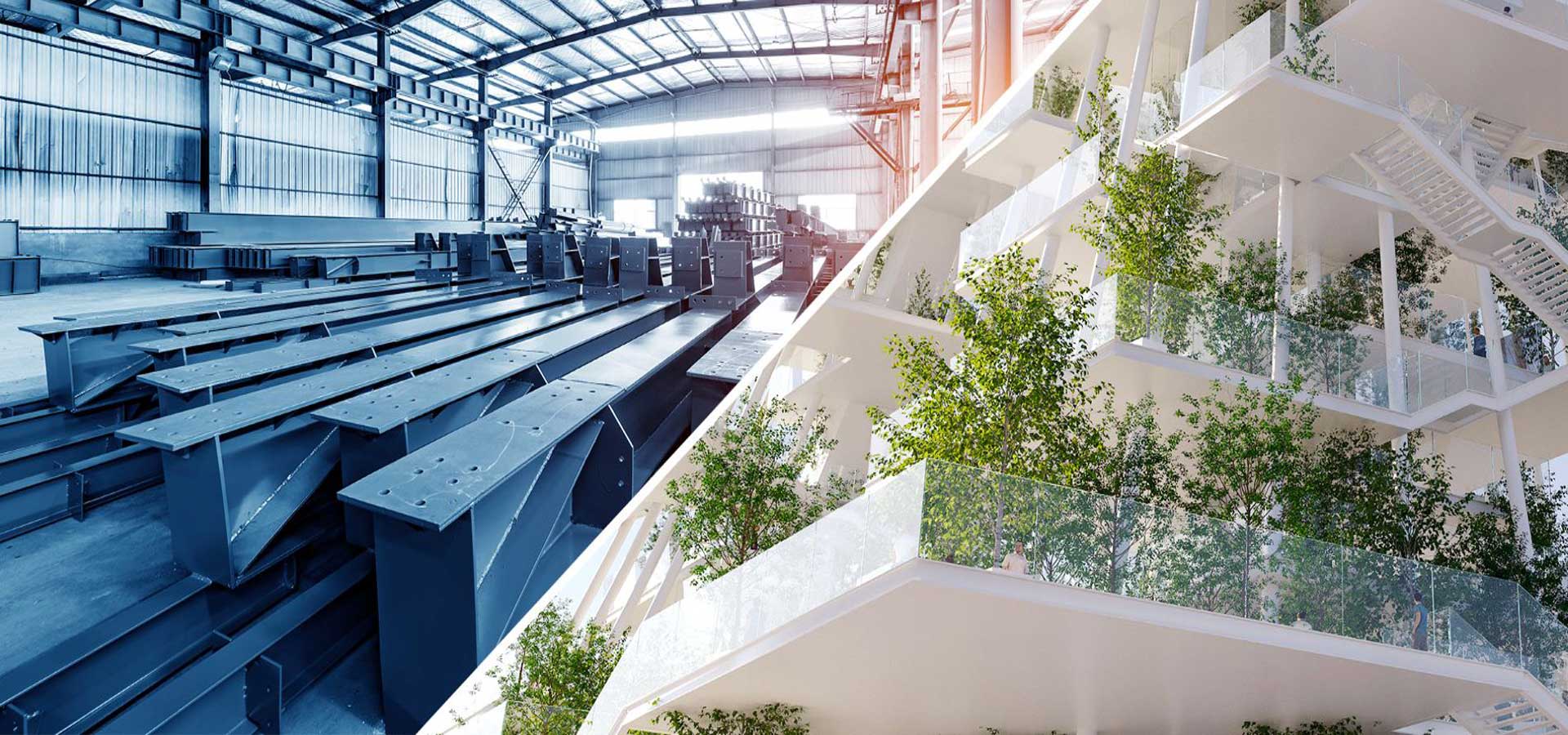MADE OF STEEL
Choosing the right material is critical when it comes to limiting the carbon footprint
of a building; it is its entire lifecycle that experts must analyze and optimize.
Steel decarbonization: making construction strong and sustainable
Steel – strong, flexible, and affordable – is one of the most important materials to the global construction industry. Unfortunately, it is also one of the most carbon-intensive to produce.
Thankfully, a growing number of steel decarbonization solutions are being developed, from hydrogen-based steelmaking to transforming how steel is mined and produced. Optimization tools can also identify inefficiencies and improve the sustainability of existing steelmaking processes.
These solutions are particularly important for the new tower project, as it relied on using a lot of steel. By leveraging digital solutions, including virtual twins and simulation software, the team were able to optimize where they sourced steel from, how they would transport it, and how they would improve its use without compromising strength and performance.
Through the 3DEXPERIENCE® platform, teams could collaborate easily with steel manufacturers and suppliers to make sure the carbon footprint was kept to a minimum. The platform’s Life Cycle Assessment (LCA) capabilities were also used to assign environmental impact scores to each process, from mining to manufacturing, to help shape decision-making, inform future projects, and even define circular, end-of-life recycling operations.
*Source: McKinsey&Company - Product sustainability: Back to the drawing board - February 7, 2022.
Understand the impact of materials on the future of Infractructure & Cities
In the testimonial of our expert, you’ll discover how the team used the 3DEXPERIENCE® platform to adapt the steel manufacturing process to limit the environmental impact of the new tower, and how they implemented "sustainability by design" at each step of the asset lifecycle.
Building with more sustainable & performant materials thanks to the 3DEXPERIENCE® platform.
Discover more about the future of Infrastructure and Cities
What’s next? How to act now? How to measure your impact and identify the skills to transform? Deep dive here
© design of the new tower by Nicolas Laisné Architectes

